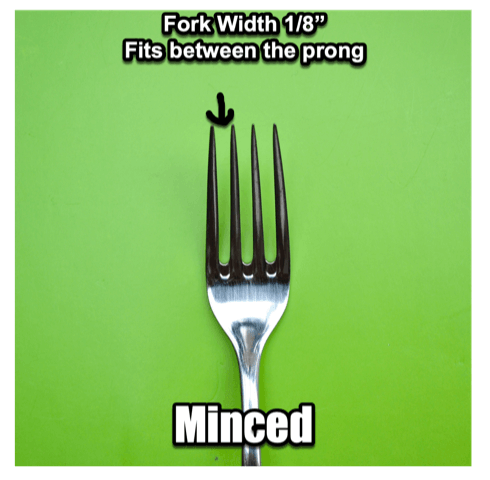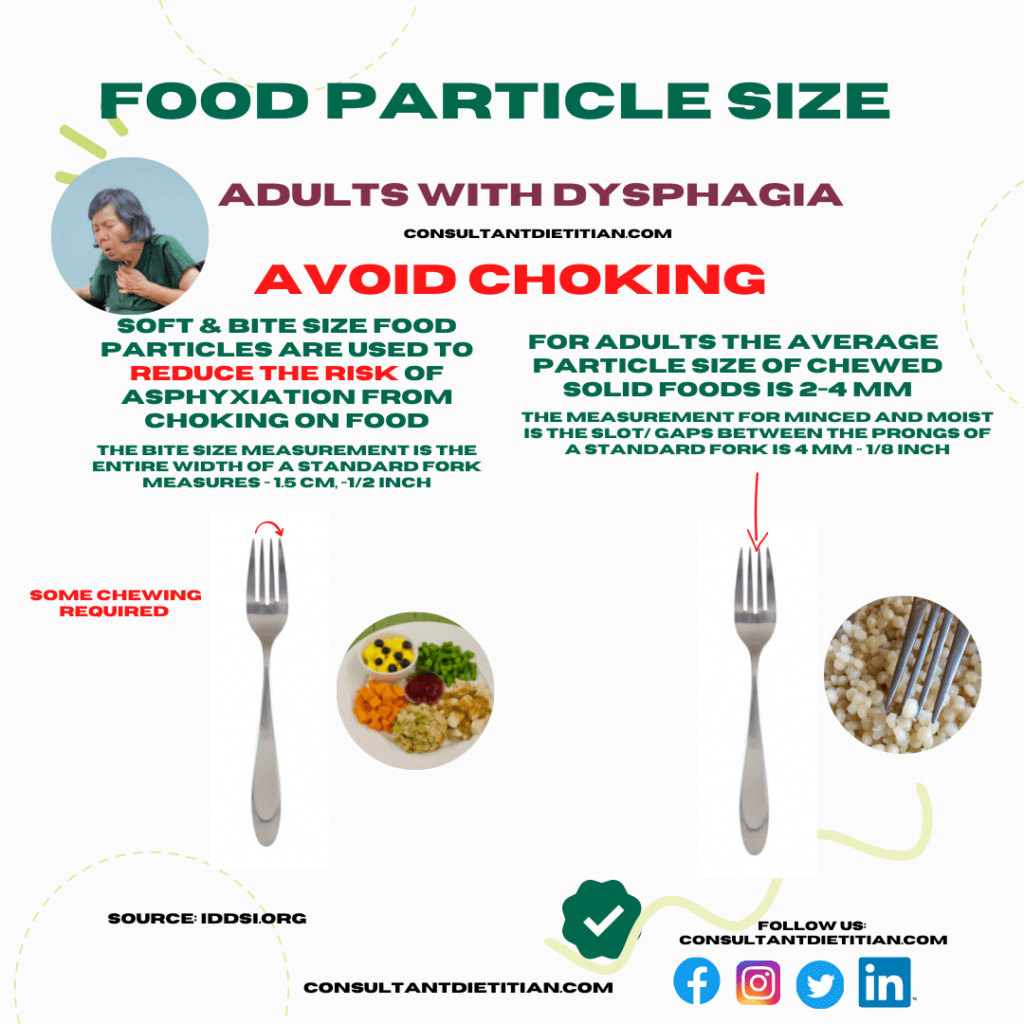Using Food Particle Size to Reduce the Risk of Choking

Using Food Particle Size to Reduce the Risk of Choking.
When eating solid foods most people do not even think about chewing and swallowing their food. They put the food in their mouth, chew and then swallow. For some adults (and children) with chewing and swallowing difficulty, the act completing this task may be difficult. Chewing and swallowing is a very complex process. Numerous problems can occur and lead to choking or aspiration. If the chewing process is not complete and foods are swallowed too big, choking can occur. Choking is a very scary for the person choking and people around.
When most adults chew food the average food particle size is broken down to smaller pieces in the mouth. For most adults the average particle size of chewed solid foods before swallowing measure to be about 2-4 mm. If foods are consumed quickly, not chewed completely, over fills mouth with food or the individual is not paying attention to the act of chewing and swallowing, choking can occur. For individuals who do not complete this process correctly, diet modification may be necessary to prevent choking. Reducing the food particle size can reduce the risk of choking.
The Soft and Bite diet is recommended for average sized adults with chewing and swallowing difficulties but must have some ability to chew. The food particle size directly correlates to the size of the average trachea (windpipe). Large pieces of food can get caught in the trachea and cause asphyxiation. Reducing the food particle size, reduces the risk of choking. Soft and bite size foods should be soft and moist. They should not be hard, crispy, crumbly, crunchy, gummy, fibrous, dry, stringy or spiky. See our blog on Food Textures that Pose a Choking Risk for examples. The solid soft food is reduced by cutting or chopping to a maximum of 1.5 X 1.5 cm. (~ ½ “ X ½”). This is the approximate size of the adult human thumb nail. The width of a standard fork measures 1.5 cm ~ (1/2 inch). Small adults, children and individuals with developmental disabilities may benefit from a smaller food particle size. (Chopped to ~ ¼”)
The Minced and Moist diet food particle size are the average size of food that is chewed before being swallowed. The slots between a standard fork measure to be 4 mm (~ 1/8 inch). To test the food particle of the minced moist diet, use a standard fork to ensure food particles pass through the prongs of a fork.
The speech language pathologist can determine the food particle size to offer for the consumer.
Always seek medical advice from you doctor before changing your diet.
Source: iddsi.org
© The International Dysphagia Diet Standardisation Initiative 2019 @ https://iddsi.org/framework. Licensed under the CreativeCommons Attribution Sharealike 4.0 License https://creativecommons.org/licenses/by-sa/4.0/legalcode. Derivative works extending beyond language translation are NOT PERMITTED.
This site is NOT the official IDDSI website


